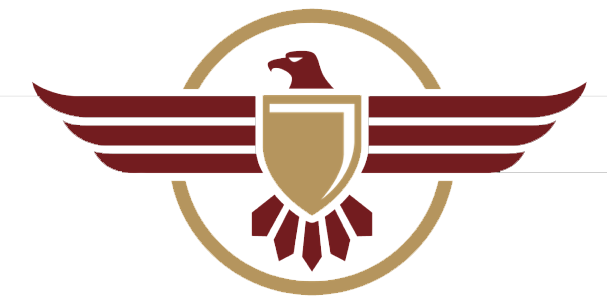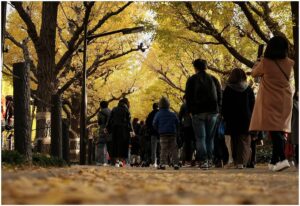Halloween brings excitement, creativity, and plenty of opportunities for schools and community groups to celebrate. From costume parades and trunk-or-treats to classroom parties and neighborhood events, it’s one of the most engaging times of year, but it also comes with unique safety challenges.
Crowded spaces, dim lighting, masks, and decorations can all increase the risk of accidents or confusion. That’s why having a clear plan in place matters. Whether you’re organizing a school event or hosting a community celebration, these Halloween safety tips will help keep everyone safe while preserving the fun.
Start with a Safety Walkthrough
Before decorations go up or candy is handed out, walk through your event area with safety in mind. Look for trip hazards, fire risks, and any dimly lit spaces where visibility might be low.
Check for:
- Loose cords or props that could cause tripping
- Blocked exits or poorly marked pathways
- Flammable decorations near lights or heaters
- Uneven ground or dark corners that may need lighting
A simple safety walkthrough a few days before the event can prevent the majority of incidents.
Keep Costumes Comfortable and Safe
Encourage families and students to choose costumes that are creative but practical. Masks, capes, and oversized accessories can limit visibility and mobility, especially in crowded hallways or outdoor areas.
For schools and youth events, share these reminders:
- Use face paint instead of full masks when possible.
- Choose flame-resistant fabrics for costumes and props.
- Avoid toy weapons or realistic accessories that could cause concern.
- Make sure costumes are short enough to prevent tripping.
You can even incorporate these reminders into event flyers or morning announcements, as it sets the tone that safety is part of the celebration.
Plan for Proper Lighting and Visibility
Most Halloween activities happen after dark, making lighting one of your most important safety tools. Poor visibility can lead to falls or make it difficult for security staff to monitor crowds.
To keep your space safe:
- Add portable lights or lanterns to dim areas.
- Encourage reflective tape on costumes or treat bags.
- Use battery-operated candles instead of open flames.
- Make sure parking lots and walkways are well lit.
If your event extends into the evening, consider hiring security or volunteer monitors to patrol outdoor areas and assist guests getting to and from their vehicles safely.
Set Clear Rules for Visitors and Volunteers
Large community events, especially trunk-or-treats or school carnivals, often attract visitors from outside your immediate network. Establishing clear boundaries helps everyone know what’s expected.
Communicate guidelines in advance through email, social media, or posted signs. For example:
- Only pre-registered volunteers can distribute candy.
- Children must be accompanied by an adult.
- Certain areas (like classrooms or staff rooms) are off-limits.
- No outside food or beverages unless approved by organizers.
These guidelines create a friendly but structured environment that makes it easier for staff and security to keep things under control.
Manage Traffic and Parking Flow
Parking lots can get hectic during Halloween events. Designate volunteers or security staff to direct traffic, especially during drop-off and pick-up times.
Some simple steps to improve flow:
- Create separate entry and exit routes if possible.
- Mark pedestrian walkways clearly.
- Use cones, barriers, or reflective vests for visibility.
- Ask guests to drive slowly and turn headlights on while moving through the lot.
For larger events, consider hiring off-duty police or trained traffic personnel to manage intersections and pedestrian crossings.
Prepare for Medical or Lost Child Situations
Even with good planning, things can happen. Having a clear process for emergencies keeps your team calm and organized.
Before your event:
- Set up a first aid station or identify staff trained in CPR.
- Establish a lost child protocol with a designated reunification area.
- Keep emergency contacts and medical forms accessible for student events.
- Communicate your emergency plan with all staff and volunteers before the event begins.
Quick, coordinated responses show families and attendees that safety is your top priority.
Review Security Coverage
Security doesn’t have to mean adding tension. It can enhance the fun by keeping things orderly and safe. For school or public events, professional security support can assist with crowd monitoring, parking, and access control.
If you partner with an outside security team, share details about:
- The layout of your event
- Entry and exit points
- Event schedule and key personnel
- Specific risks or crowd surges you anticipate
A professional security presence also acts as a visible deterrent for any unwanted behavior and helps coordinate with local law enforcement if needed.
End with a Post-Event Review
After the costumes come off and the candy is gone, take time to debrief with your team. What went well? Were there any safety issues, near misses, or communication gaps?
Documenting these insights helps you improve next year’s event and shows your commitment to continuous safety improvement. You can even keep a simple event safety checklist on file for future use.
A Safe Halloween Is a Happy Halloween
Halloween events should be full of joy, not stress. When schools, community groups, and families work together, safety becomes second nature.
At MProtective, our team partners with schools, local governments, and event organizers to help plan secure, family-friendly celebrations all year long. From crowd management to emergency preparedness, we’re here to make every gathering safe and memorable. Connect with our team today.



